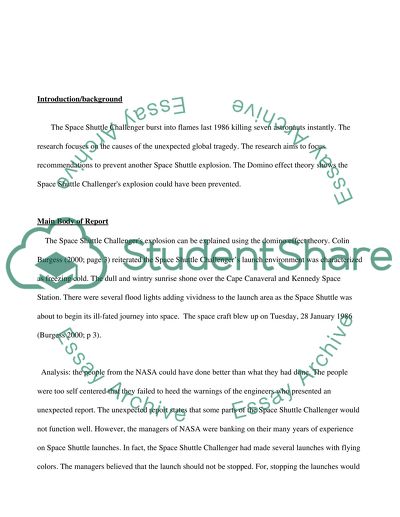Cite this document
(“Space Shuttle Challenger Accident Research Paper”, n.d.)
Space Shuttle Challenger Accident Research Paper. Retrieved from https://studentshare.org/education/1593275-space-shuttle-challenger-accident
Space Shuttle Challenger Accident Research Paper. Retrieved from https://studentshare.org/education/1593275-space-shuttle-challenger-accident
(Space Shuttle Challenger Accident Research Paper)
Space Shuttle Challenger Accident Research Paper. https://studentshare.org/education/1593275-space-shuttle-challenger-accident.
Space Shuttle Challenger Accident Research Paper. https://studentshare.org/education/1593275-space-shuttle-challenger-accident.
“Space Shuttle Challenger Accident Research Paper”, n.d. https://studentshare.org/education/1593275-space-shuttle-challenger-accident.


